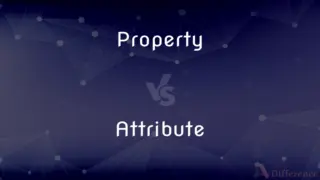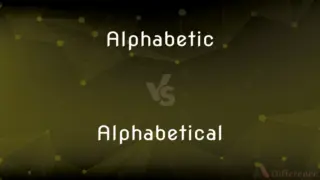Drypoint vs. Etching — What's the Difference?
By Fiza Rafique & Urooj Arif — Updated on April 29, 2024
Drypoint involves scratching an image onto a plate with a sharp needle, creating a distinctive burr and soft lines, while etching uses acid to carve lines into a metal plate, allowing for fine details and more precise control.

Difference Between Drypoint and Etching
Table of Contents
ADVERTISEMENT
Key Differences
Drypoint is a printmaking technique where an artist uses a sharp needle to scratch an image directly onto a plate, typically made of copper, zinc, or steel. This scratching process creates a burr, a rough edge on the side of the incised lines, which catches extra ink and produces a characteristic soft and somewhat fuzzy line in the final print. In contrast, etching involves coating a metal plate with a protective ground and then drawing through the ground with a sharp tool to expose the metal. The plate is then submerged in an acidic solution, which eats away at the exposed lines, etching them into the surface. This allows for more precision and finer detail than drypoint.
Drypoint does not require the use of chemicals, making it more accessible and less hazardous for artists who prefer a more direct and tactile method of working. The simplicity of the technique means it can be done almost anywhere with minimal equipment. On the other hand, etching requires the use of acid and other chemicals to create the image, necessitating a well-ventilated area and more stringent safety precautions, which can complicate the process and limit where it can be practiced.
The unique quality of drypoint comes from the burr raised by the scratching tool, which gives prints a rich, velvety appearance but is less durable and wears down quickly during printing. This means fewer prints can be made before the quality of the image degrades significantly. Conversely, etching lines are more durable and can produce a larger number of high-quality prints from a single plate, as the etched lines do not wear down as quickly.
Drypoint offers artists the ability to work more spontaneously, as changes can be made on the plate directly with the needle and immediate results can be seen once inked. This spontaneity is somewhat restricted in etching, where changes require re-coating and re-etching areas of the plate, making the process more time-consuming and less flexible.
Artists choosing drypoint often appreciate the unique textural qualities the technique provides, which cannot be exactly replicated through any other printmaking process. Whereas etching is favored for its ability to produce precise and intricate designs that are reproducible across many prints, making it ideal for more detailed and complex images.
ADVERTISEMENT
Comparison Chart
Technique
Scratching image directly on the plate
Drawing on wax to etch image with acid
Materials Used
Metal plate, sharp needle
Metal plate, acid, ground resistant to acid
Image Characteristics
Soft, fuzzy lines due to burr
Fine, precise lines
Durability of the Plate
Wears down quickly; limited number of prints possible
Durable; allows more prints to be made
Safety and Accessibility
Less hazardous, simpler setup
Requires careful handling of acids and ventilation
Compare with Definitions
Drypoint
Known for smaller editions due to plate wear.
Only twenty prints were made from the drypoint before the plate was too worn to use.
Etching
Involves coating the plate with an acid-resistant ground before drawing the image.
Before he could begin etching, he carefully applied a thin layer of ground to the plate.
Drypoint
Characterized by the creation of a burr that produces soft-edged lines in prints.
The softness of the drypoint lines enhanced the mysterious atmosphere of the artwork.
Etching
Requires specific safety measures due to the use of corrosive acids.
He made sure to wear gloves and a mask before starting the etching process.
Drypoint
A printmaking technique involving direct incision into a plate with a sharp needle.
The artist chose drypoint for its rich, expressive lines despite the rapid wear of the plates.
Etching
Capable of producing detailed and precise lines, suitable for complex images.
The etching captured the detailed textures of the landscape perfectly.
Drypoint
Allows for a more tactile and direct modification of the printing plate.
His love for drypoint stemmed from the direct control he had over every line he scratched.
Etching
Allows for larger editions of prints, as the etched plates are more durable.
The first edition of his etching series was so popular, he printed several more batches.
Drypoint
Typically involves less equipment and fewer materials than other printmaking methods.
She set up her drypoint workstation with just a few basic tools and began working.
Etching
A printmaking process using acid to cut into the unprotected parts of a metal surface to create a design.
Etching allowed her to create intricate patterns that were impossible with other techniques.
Drypoint
Drypoint is a printmaking technique of the intaglio family, in which an image is incised into a plate (or "matrix") with a hard-pointed "needle" of sharp metal or diamond point. In principle, the method is practically identical to engraving.
Etching
Etching is traditionally the process of using strong acid or mordant to cut into the unprotected parts of a metal surface to create a design in intaglio (incised) in the metal. In modern manufacturing, other chemicals may be used on other types of material.
Drypoint
A technique of intaglio engraving in which a hard steel needle is used to incise lines in a metal, usually copper plate, with the rough burr at the sides of the incised lines often retained to produce a velvety black tone in the print.
Etching
The art of preparing etched plates, especially metal plates, from which designs and pictures are printed.
Drypoint
An engraving or print made using this technique.
Etching
A design etched on a plate.
Drypoint
(uncountable) A technique of intaglio printmaking similar to engraving in which an image is incised into a plate by scratching the surface with a hard, sharp metal (or diamond) point.
Etching
An impression made from an etched plate.
Drypoint
(countable) The needle used in this technique.
Etching
(uncountable) The art of producing an image from a metal plate into which an image or text has been etched with acid.
Drypoint
(countable) A print made using this technique.
Etching
(countable) The image created by this process.
Etching
Present participle of etch
Etching
A design carried out by means of the above process; a pattern on metal, glass, etc., produced by etching.
Etching
An impression on paper, parchment, or other material, taken in ink from an etched plate.
Etching
An impression made from an etched plate
Etching
An etched plate made with the use of acid
Etching
Making engraved or etched plates and printing designs from them
Common Curiosities
How many prints can typically be made from a drypoint plate compared to an etching plate?
A drypoint plate can typically produce fewer prints than an etching plate due to the quick wear of the burr.
What kind of images are best suited for drypoint?
Drypoint is best suited for expressive, textural images that benefit from the soft, rich lines produced by the burr.
What are the safety concerns associated with etching?
Etching requires handling acids and other chemicals, demanding proper ventilation and protective gear.
What types of metals are commonly used for drypoint and etching plates?
Copper, zinc, and steel are commonly used for both drypoint and etching, with copper being particularly favored for its fine grain and workability.
Can drypoint and etching be combined in a single artwork?
Yes, many artists combine drypoint and etching to exploit the unique qualities of both techniques in one print.
What is the main difference between drypoint and etching?
The main difference is that drypoint involves mechanical scratching of the plate, while etching uses acid to create the image.
Can drypoint and etching techniques be self-taught, or do they require formal training?
While basic techniques can be self-taught, formal training is beneficial, especially for etching, to master the use of chemicals and achieve high-quality results.
What is the typical lifespan of a drypoint burr during printing?
The burr in drypoint typically begins to flatten after about 10 to 30 prints, affecting the quality and character of subsequent prints.
Are there any famous artists known for their work in drypoint or etching?
Rembrandt is renowned for his etchings, while Mary Cassatt and Edgar Degas are notable for their use of drypoint in their artworks.
How does the cost of materials and setup compare between drypoint and etching?
Drypoint generally requires fewer materials and a simpler setup, making it less costly than etching, which requires acids and a more elaborate setup.
How does the artist achieve color in drypoint or etching prints?
Color can be added to both drypoint and etching prints by using colored inks, a la poupée inking techniques, or by hand-coloring prints after they are pulled.
How do printmakers ensure consistency across multiple prints in an edition in drypoint and etching?
Consistency is achieved through careful inking, wiping, and pressing techniques, ensuring each print is as similar to the others as possible.
What is the role of paper in the quality of a drypoint or etching print?
The type of paper is crucial; high-quality, absorbent paper is best for capturing the ink from the burr in drypoint and the detailed lines in etching.
What environmental considerations are associated with etching?
Etching involves using toxic acids and solvents, which require careful disposal and ventilation to minimize environmental impact.
How does the artist control the depth of the line in drypoint and etching?
In drypoint, depth is controlled by the pressure and angle of the needle. In etching, depth is controlled by the time the plate spends in the acid.
Share Your Discovery

Previous Comparison
Property vs. Attribute
Next Comparison
Alphabetic vs. AlphabeticalAuthor Spotlight
Written by
Fiza RafiqueFiza Rafique is a skilled content writer at AskDifference.com, where she meticulously refines and enhances written pieces. Drawing from her vast editorial expertise, Fiza ensures clarity, accuracy, and precision in every article. Passionate about language, she continually seeks to elevate the quality of content for readers worldwide.
Co-written by
Urooj ArifUrooj is a skilled content writer at Ask Difference, known for her exceptional ability to simplify complex topics into engaging and informative content. With a passion for research and a flair for clear, concise writing, she consistently delivers articles that resonate with our diverse audience.











































